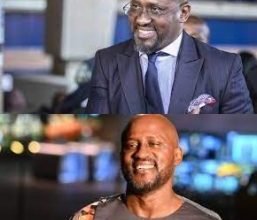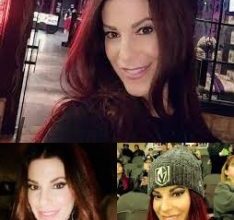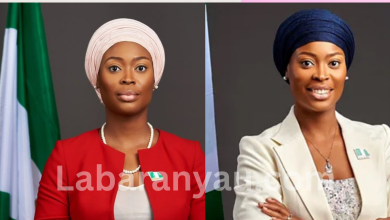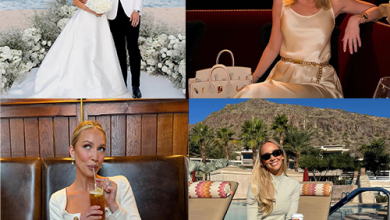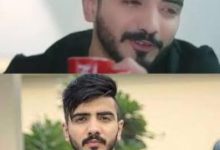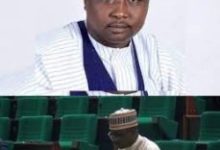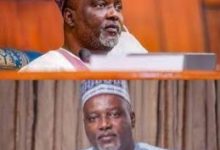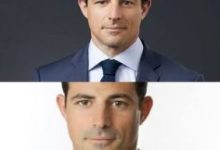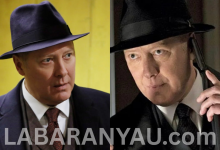
Nelson Mandela
Ironically, Nelson Mandela’s christened forename, “Rolihlahla,” which means “troublemaker,” fit his personality well throughout his formative years because he seriously troubled the South African government through his anti-apartheid campaign and revolutionary tactics. Mandela was raised in a Methodist Christian neighborhood and inherited from his father the traits of “proud rebelliousness” and “sense of fairness.” He was heavily interested in anti-colonial politics from a young age, which led to his joining the ANC.
The admission was significant not only in Mandela’s life but also in the lives of all South African citizens because it ultimately resulted in a nation devoid of discrimination. Mandela was motivated by Gandhi and dedicated to nonviolent resistance; nevertheless, after some time, he switched to armed resistance. This was mostly caused by the state’s escalating repression and violence as well as the failure of nonviolent protests against apartheid.
Mandela oversaw a number of movements during his 67-year political career and was detained, found guilty, and sentenced to prison multiple times—the heaviest sentence being 27 years in prison. All the suffering, nevertheless, was worthwhile because 1994 saw the end of apartheid and the first multiracial elections.
In addition, Mandela was elected the nation’s first President in addition to becoming the first black South African to hold the position. Most likely because of this, he is referred to as many things, such as “the father of the nation,” “the founding father of democracy,” “the national liberator, the savior, its Washington and Lincoln rolled into one,” and “the national liberator, the savior.”

Nelson Mandela Childhood & Early Life
On July 18, 1918, Gadla Henry Mphakanyiswa and Nosekeni Fanny gave birth to Rolihlahla Mandela. His father served the monarch as a local chief and councilor. He had four spouses, four boys, and nine girls in total, and was a polygamist.
Mandela was raised in the Qunu community. He spent a lot of his formative years playing with neighborhood youngsters and herding livestock. Even though neither of Mandela’s parents could read or write, they saw the value of education and enrolled him in a Methodist school when he was seven years old. Mandela’s instructor gave him the name Nelson, which he adopted two years later.
Mandela was given to Chief Jongintaba Dalindyebo by his mother after the death of his father. He had a big role in the Dalindyebo family, who raised young Mandela as one of their own.
He went to one of the mission schools close to the palace. His interest in African history has increased as a result of this. In addition to this, he also studied geography, history, English, and Xhosa.
When Mandela reached 16, he went to Tyhalarha to get circumcised, which served as a symbolic transformation from a boy to a man. Following the rite, he was given the name “Dalibunga.”
Mandela graduated from a reputable high school before enrolling in the Methodist college in Fort Beaufort in 1937. Mandela discovered his true purpose in native African culture, despite the lecturers’ emphasis on the importance and superiority of English culture and governance.
He later enrolled at the University of Fort Hare to complete his graduation requirements, but was expelled because of his membership in the Student Representative Council and his protests of the university’s policies.
In 1941, Mandela relocated to Johannesburg. While working on his BA via correspondence during the day, Walter Sisulu, an activist for the African National Congress, received the majority of his attention during the day.
Nelson Mandela Education
A friend of his father’s recommended that Mandela get baptized in the Methodist Church. He later became the first member of his family to enroll in school. Mandela’s teacher informed him that he would henceforth go by the name Nelson, as was customary at the time and likely as a result of the prejudice of the British educational system in South Africa.
Mandela’s life had a significant turn when his father passed away from lung disease when he was 12 years old. Chief Jongintaba Dalindyebo, the acting regent of the Thembu people, adopted Mandela as a favor to Mandela’s father, who had suggested Jongintaba be made chief years previously.
After that, Mandela departed the carefree life he had known in Qunu because of concern that he would never return to his hometown. He took a motorcar to the chief’s royal house at Mqhekezweni, Thembuland’s provincial capital. Despite the fact that he had not forgotten his home town of Qunu, he swiftly acclimated to its new, more affluent surroundings.
Mandela received the same status and obligations as the regent’s other two children, Justice, his son and oldest child, and Nomafu, his daughter. Mandela studied English, Xhosa, history, and geography in a one-room school next to the palace.
Elder chiefs who visited the Great Palace on formal business during this time sparked Mandela’s interest in African history. He discovered that up until the arrival of the white people, Africans had lived in a state of relative peace.
The elders claimed that white males had previously broken the bond of brotherhood between the youngsters of South Africa. White men stole all of this for themselves while Black men shared their land, air, and water with them.
Nelson Mandela Political Pursuits
Mandela enrolled at the University of Witwatersrand to begin his legal studies after earning his BA in 1943. In his class, he was the only native African. Under the direction of Sisulu, who was influencing Mandela more and more, he joined the ANC.
In this period, Mandela developed his political beliefs. As a result of his active participation in the anti-apartheid campaign, the African National Congress Youth League (ANCYL), of which Mandela was a member of the executive committee, was founded on Easter Sunday.
Mandela was chosen to fill the position of Secretary at the ANCYL in 1947. With policy objectives of full citizenship, redistribution of land, trade union rights, and free and compulsory education for all children, the organization sought to abandon the outdated strategy of political petitioning and employ new tactics such as boycott, strike, civil disobedience, and non-cooperation.
In 1950, Mandela was chosen to lead the ANCYL as its national president. Mandela continued his struggle against prejudice in his newly found position. In addition, he looked at the bigger picture, which involved working for national emancipation.
After being greatly impressed by Gandhi, Mandela embarked on the path of nonviolent resistance two years later. Together with communist and Indian organizations, he created the Defiance Campaign against apartheid. 10,000 persons initially made up the organization, which quickly increased to 100,000.

The administration authorized martial law and mass arrests as a retaliation to the campaign. They even forbade Transvaal ANU President J. B. Marks from appearing in public, which led to Mandela taking over as Marks’ replacement.
Mandela was detained on several occasions as a result of his anti-apartheid activism. On July 30, 1952, he was found guilty of obstructing the repression of communism for his Defiance Campaign and handed a suspended prison term. He was also prohibited from attending meetings or conversing with more than one person at once for a period of six months.
In response to the restriction, Mandela created the M-Plan, also known as the Mandela Plan, which called for segmenting the organization into cells with a more centralized leadership. The fundamental goal of the strategy was to make it possible for the ANC’s top leaders to stay in constant contact with the organization’s members without holding open meetings.
Mandela, meanwhile, aced his bar exam to become a fully qualified attorney. Prior to founding Mandela and Tambo, a law practice they co-founded with Oliver Tambo, he began working for the firm Terblanche and Briggish. The company frequently dealt with instances of police brutality and was the only African-owned law business.
Nelson Mandela University Life
Regent Jongintaba oversaw Mandela’s preparation for high office, not as a chief but as a counselor to one. Mandela, who was Thembu royalty, attended the Clarkebury Boarding Institute, a Wesleyan mission school, and Wesleyan College. He would later say that he excelled in school through “plain hard work.”
He was also a standout in boxing and track. Mandela’s Wesleyan classmates originally made fun of him for being a “country boy,” but he later made friends with several of them, including Mathona, who was his first female friend.
Mandela enrolled at the University of Fort Hare in 1939, which at the time was the only residential institution of higher education in South Africa for Black people. Scholars from all around sub-Saharan Africa flocked to Fort Hare, which was regarded as Africa’s Harvard.
In his first year of college, Mandela studied the obligatory classes but concentrated on Roman-Dutch law to get ready for a future as an interpreter or clerk in the civil service, which was seen to be the finest job a Black man could have at the time.
Nelson Mandela won a seat on the Student Representative Council during his second year at Fort Hare. Students have been complaining about the food and SRC’s lack of authority for a while. The majority of students who participated in this election decided to boycott if their demands weren’t satisfied.
Mandela left his job in support of the student majority. Mandela was given an ultimatum by the university, which expelled him for the remainder of the academic year for this act of disobedience and allowed him to return if he agreed to join the SRC. The regent was incensed when Mandela arrived home and told him plainly that he would have to change his mind and return to school in the fall.
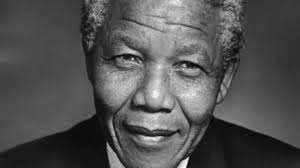
A few weeks after Mandela’s homecoming, Regent Jongintaba made the announcement that his adopted son had been set up in marriage. The regent was concerned that Mandela’s life was properly planned and that the arrangement was made in accordance with his rights and tribal custom.
Mandela fled his home after hearing the news, feeling trapped and certain that his only alternative was to obey the most recent command. He made his home in Johannesburg, working various jobs like guard and clerk while also finishing his bachelor’s degree through correspondence classes. He then registered to study law at Johannesburg’s University of the Witwatersrand.
Anti-Apartheid Movement
After joining the African National Congress in 1942, Mandela got involved in the anti-apartheid campaign quickly. A tiny number of young Africans organized themselves within the ANC under the name African National Congress Youth League. They wanted to turn the ANC into a massive grassroots movement that would draw support from the millions of rural peasants and workers who were voiceless under the current government.
In particular, the group thought that the ANC’s previous petitioning strategies were ineffectual. The Youth League’s tactics of boycott, strike, civil disobedience, and non-cooperation were formally embraced by the ANC in 1949, along with its policy objectives of full citizenship, land redistribution, trade union rights, and free and compulsory education for all children.
Mandela oversaw 20 years of nonviolent, non-violent protests against the racist policies of the South African government, such as the 1952 Defiance Campaign and the 1955 Congress of the People. Together with Oliver Tambo, a promising student he had met while attending Fort Hare, he established the law company Mandela and Tambo. Unrepresented Black persons received free and affordable legal advice from the law business.
Mandela and 150 other people were detained in 1956 on treason charges due to their political activism; nevertheless, they were ultimately found not guilty. Africanists, a new generation of Black activists who thought the ANC’s pacifist approach was unsuccessful, were challenging the ANC at the same time.
The Pan-Africanist Congress was quickly founded by Africanists, which had a negative impact on the ANC; by 1959, the movement had lost most of its violent support.
Nelson Mandela Wife and Children
Mandela has three marriages and six children. In 1944, he got married to Evelyn Ntoko Mase. Madiba Thembekile (d. 1964), Makgatho (d. 2005), Makaziwe (d. 1948 at nine months), and Maki were the couple’s four children. In 1957, the couple got a divorce.
Mandela married Winnie Madikizela in 1958. Before divorcing in 1996, the couple had two daughters: Zindziswa, the South African ambassador to Denmark, and Zenani, the South African ambassador to Argentina.
Mandela wed Graca Machel, the country’s first minister of education, two years later, in 1998. They were together until his passing in 2013.
Nelson Mandela Later Years
The South African Indian Congress, the Colored People’s Congress, the South African Congress of Trade Unions, and the Congress of Democrats all actively participated in Mandela’s formation of the Congress of the People in 1955. The major purpose of the action was to appeal to South Africans and request that they submit ideas for a post-apartheid period.
The Freedom Charter that was created as a result was formed after many suggestions were received. The Rusty Bernstein-drafted charter sought to nationalize important industries in order to establish a democratic, non-racial state. 3000 delegates showed up for the called conference. It was unsuccessful, though, since the cops got involved.
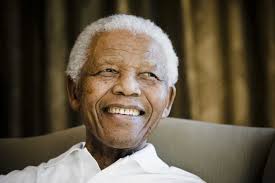
Mandela resisted the bans he repeatedly received that prevented him from appearing in public by doing so on a regular basis. Following this, Mandela and other ANC activists were detained on December 5, 1956, on charges of high treason against the government.
Even though they were released on bond a week later, the court case didn’t start until January 9, 1957, when the judge decided there were good enough grounds to put the defendants on trial. The defendants’ innocence was declared and they were deemed “not guilty” at the conclusion of the trial, which took place six years later, in 1961.
The Pan-African Congress (PAC), led by Robert Sobukwe, was a new organization created by militant Africans in the interim. Mass arrests resulted from the activities against the government, which also resulted in the imprisonment of Mandela and other ANC and PAC leaders as well as the banning of the two groups.
Between 1961 and 1962, Mandela propagated the widespread stay-at-home strike by traveling the nation in a disguised avatar. He also helped organize Umkhonto we Sizwe, often known as MK or the “Spear of the Nation,” the ANC’s new cell structure.
The ANC’s armed branch, MK, participated in some acts of violence directed at the government. The MK aimed to pressure the government as much as possible while causing the least amount of harm to civilians. As a result, they largely targeted transportation hubs, power plants, and military locations at night.
At the Pan-African Freedom Movement for East, Central, and Southern Africa (PAFMECSA) summit in February 1962, Mandela was selected as the ANC’s representative. Mandela learned about political reforms in other nations and met notable activists, journalists, and politicians on the journey, which was successful. Additionally, he was able to gather some of the money needed to buy MK’s weapons.
Nelson Mandela Life Imprisonment
Mandela was detained for leaving the country without permission after arriving back in South Africa and given a five-year prison term. Mandela was sentenced to life in jail after being found guilty of crimes that took place when he was leading the ANC struggle.
Nearly 18 years of his 27-year sentence were served in Robben Island Prison, a maximum security facility on a small island close to Cape Town. He was then moved to Pollsmoor Prison in Cape Town and subsequently to the Victor Verster Prison outside of Paarl, where he was eventually freed.
Mandela was occasionally offered freedom in exchange for giving up his political principles, but he refused to take them. He remained adamant in his belief that personal freedom was useless if political organizations were still outlawed.
F. W. de Klerk
The government engaged in many negotiations with Mandela over the coming years in response to mounting domestic and international pressure for his release, but no agreement was reached.
Mandela’s release was not officially confirmed until February 11, 1990, when Frederik Willem de Klerk took Botha’s place after the latter suffered a stroke. Additionally, De Klerk withdrew the ANC’s ban, relaxed limits on political parties, and halted executions.
Mandela immediately urged foreign governments to continue applying pressure to the South African government for constitutional reform after being released from prison. He proclaimed that the ANC will continue its armed struggle until the Black majority was granted the right to vote while also pledging to strive toward peace.
Oliver Tambo, a devoted friend and coworker, served as Nelson Mandela’s national chairperson after he was elected president of the African National Congress in 1991.
Nobel Peace Prize
Mandela and President de Klerk shared the Nobel Peace Prize in 1993 for their efforts to end apartheid in South Africa.
Mandela worked with President de Klerk to secure the nation’s first multiracial elections after his release from prison. While many Black South Africans desired a complete transfer of power, White South Africans were willing to share power.
The talks were frequently tense, and reports of violent outbursts, such as the murder of ANC leader Chris Hani, persisted across the nation. Despite the protests and violent resistance, Mandela had to maintain a delicate balance between political pressure and hard negotiations.
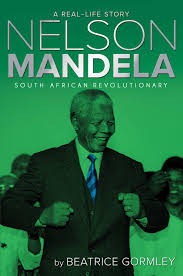
Nelson Mandela Presidency
Negotiations between Black and White South Africans were successful in large part because to Mandela and President de Klerk: South Africa held its first democratic elections on April 27, 1994. On May 10, 1994, at the age of 77, Mandela took office as the nation’s first Black president, with de Klerk serving as his first deputy.
President Mandela struggled to make the switch from minority rule and apartheid to Black majority government from 1994 to June 1999. He encouraged Black South Africans to embrace the once-despised national rugby side as he exploited the country’s love of sports as a springboard to encourage racial harmony.
By hosting the Rugby World Cup in 1995, South Africa entered the international spotlight and elevated the fledgling nation’s standing. Mandela received the Order of Merit in the same year as well.
Mandela sought to prevent the collapse of South Africa’s economy while he was president. The South African government sponsored the provision of jobs, housing, and fundamental healthcare under his Reconstruction and Development Plan.
A new constitution for the country was enacted by Mandela in 1996; it established a strong central government based on majority rule and protected both minorities’ rights and the freedom of speech.
Life Thereafter
On February 2, 1990, state president F.W. de Klerk announced Nelson Mandela’s release from jail while also lifting the ban on the ANC. Mandela declared his commitment to bringing peace to the black majority and granting them the right to vote in elections, despite his years spent in prison.
He reclaimed control of the ANCF and retook his post as the ANC’s duly elected President, with headquarters in Shell House. He argued for the first multi-racial elections through his multi-party negotiation.
Even while the White South Africans were open to sharing authority, the Blacks want total dominance. As a result, violent eruptions increased in frequency. Mandela, however, had to strike a careful balance between earnest negotiation and political pressure in the face of armed opposition.
South Africa’s first democratic elections took place in 1994. Mandela won the election and went on to become the nation’s first black president as a result.
Mandela worked tirelessly as president to facilitate the shift from minority black rule to majority black rule. He put an end to apartheid and created a new constitution that established a powerful central government based on majority rule that protected minorities’ rights and their right to free speech.
He enacted new economic measures to promote land reform, fight poverty, and improve healthcare. Mandela oversaw military action in Lesotho and acted as a mediator between Libya and the United Kingdom on the world stage.
Mandela retired from active politics after serving a successful first term and declined to run for reelection. He nevertheless persisted in his social activism, raising money to construct hospitals and schools in South Africa’s rural areas. He established the Mandela Foundation and acted as a peacemaker during the civil conflict in Burundi.
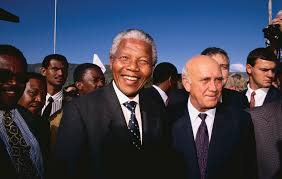
Nelson Mandela Major Works
Mandela was a part of the ANC Youth League at its inception. During his tenure at the ANCYL, he completely overhauled the organization, throwing out all of the outdated tactics and introducing new ones including boycotting, striking, civil disobedience, and non-cooperation. His principal goals were to eradicate racism, provide people full citizenship, redistribute land, grant rights to unions, and provide all children with free and mandatory education.
He gained notoriety for his Congress of the People in 1955 and Defiance Campaign in 1952. The movement involves nonviolent opposition against the racial policies of the South African government.
He was the creator of MK, also known as Umkhonto we Sizwe or the “Spear of the Nation.” One of the ANC’s cells was focused on promoting violent resistance to the authorities.
The Elders
The Elders, a group of world leaders looking to work both publicly and privately to find solutions to some of the world’s most difficult problems, was created on July 18, 2007, by Nelson Mandela and his wife, Graca Machel. Kofi Annan, Ela Bhatt, Gro Harlem Brundtland, Jimmy Carter, Li Zhaoxing, Mary Robinson, and Muhammad Yunus were among the participants.
The Elders’ influence has extended to Asia, the Middle East, and Africa. They have supported projects to address humanitarian crises and advance democracy in addition to advocating peace and women’s equality.
In addition to promoting equality and peace on a local, national, and international level, Mandela stayed dedicated to the AIDS epidemic in his latter years. Makgatho, his son, passed away from the illness in 2005.
Relationship With Barack Obama
In 2010, Mandela made his final public appearance at the World Cup final game in South Africa. In his later years, he remained mainly out of the public eye, preferring to spend much of his time in the Qunu hamlet where he was raised, south of Johannesburg.
However, he did meet with First Lady of the United States Michelle Obama, who traveled to South Africa in 2011. When Mandela visited the US in 2005, Barack Obama, then a junior senator from Illinois, also had a meeting with him.
Nelson Mandela Death
At the age of 95, Mandela passed away in his home in Johannesburg, South Africa, on December 5, 2013. Mandela had a brief period in the hospital in Johannesburg after contracting a lung infection in January 2011 before having surgery for a stomach issue in early 2012.
After a few days, he was allowed to go, and he eventually came back to Qunu. Mandela would require additional tests and medical care for his recurrent lung illness several times over the following years, in December 2012, March 2013, and June 2013.
Following his hospitalization in June 2013, Machel postponed an appearance in London to be by her husband’s side, while Zenani Dlamini, his daughter, rushed from Argentina to South Africa to be with her father.
In response to public anxiety over Mandela’s health scare in March 2013, South Africa’s president, Jacob Zuma, released a statement and pleaded for prayer: Zuma urged South Africans and the rest of the world to pray for and think about their beloved leader, Madiba, and his family.
Zuma made a speech about Mandela’s legacy on the day of his passing. “Wherever we are in the country, wherever we are in the world, let us reaffirm his vision of a society… in which none is exploited, oppressed or dispossessed by another,” he said.
Nelson Mandela Movie and Books
Mandela’s autobiography, Long Walk to Freedom, which he had written largely covertly while imprisoned, was published in 1994. The 2013 film Mandela: Long Walk to Freedom was inspired by the book.
No Easy Walk to Freedom, Nelson Mandela: The Struggle Is My Life, and Nelson Mandela’s Favorite African Folktales are just a few of the books he wrote on his life and hardships.
Mandela Day
Mandela Day, observed annually on July 18 to promote world peace and honor the legacy of the South African statesman, was established in 2009. It falls on Mandela’s birthday. The yearly event, according to the Nelson Mandela Foundation, aims to inspire people all around the world to give back in the same way that Mandela has his entire life.
According to a statement on the website of the Nelson Mandela Foundation, Mr. Mandela spent 67 years of his life defending human rights. We only ask that everyone donates 67 minutes of their time, whether it is to support their favorite charity or give back to their community.
Nelson Mandela Awards & Achievements
Nelson Mandela is honored to have won the Nobel Peace Prize, which he and de Klerk shared that year. He paid tribute to Mahatma Gandhi, on whose life and work he had been greatly impacted.
As part of an effort to honor and pay tribute to Mandela’s outstanding contributions to the anti-apartheid fight, the United Nations General Assembly proclaimed January 18th of each year as “Mandela Day” in 2009.
Mandela was honored by Queen Elizabeth II by receiving the Order of Merit and the Bailiff Grand Cross of the Order of St. John.
When Mandela was given the Order of Canada, he became the only person still alive to acquire honorary Canadian citizenship.
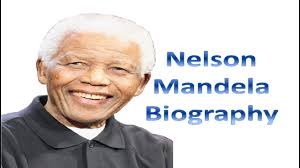
Nelson Mandela Personal Life & Legacy
In his lifetime, Nelson Mandela got married three times. Evelyn Ntoko Mase received the first one in October 1944. 13 years of marriage came to an abrupt end when Evelyn accused Mandela of adultery and absenteeism.
Only two of the couple’s original four children—two sons and two daughters—remain alive today.
In 1958, Winnie Madikizela-Mandela and Mandela made their second trip down the aisle together. Two girls were a blessing for the couple. After their 1992 separation, they ultimately got divorced in 1996.
On the occasion of his 80th birthday, Mandela remarried Graca Machel (née Simbine), the widow of Samora Machel.
Since 2004, Mandela has experienced deteriorating health, which got worse in 2011 when he was admitted to the hospital for a respiratory infection. Since then, Mandela underwent several hospital stays before passing away on December 5, 2013.
Trivia
Despite going by the name Nelson Mandela in the public eye, this isn’t his baptismal name.
He was South Africa’s first president to be elected. He served as the nation’s first black president.
He is referred to as “the father of the nation,” “the founding father of democracy,” “the national liberator, the savior, its Washington and Lincoln rolled into one” and other honorific names in South Africa.
Top 10 Facts You Did Not Know About Nelson Mandela
The first member of Nelson Mandela’s family to enroll in school.
In 1952, he and Oliver Tambo founded South Africa’s first black-owned law business.
Tripe, which is made from the stomach lining of farm animals, was Nelson Mandela’s favorite food.
He was frequently known as “the Black Pimpernel” because of his propensity for disguising himself in order to avoid capture. He frequently pretended to be a field assistant, a chauffeur, or a chef.
While imprisoned on the infamous Robben Island, he developed a method of delivering covert notes to other convicts because he was an excellent communicator.
He thought that sports were an excellent way to unite the nation’s diverse populations
He is commemorated by the name Australopicus nelsonmandelai, a prehistoric woodpecker.
Due to his adamant opposition to apartheid, Mandela was once placed on the U.S. terror watch list.
In the 1992 film “Malcolm X,” Nelson Mandela made a brief cameo as a teacher.
More than 250 accolades, including honorary degrees from more than 50 universities worldwide, were bestowed to Mandela.
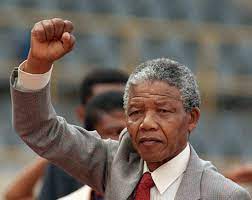
What is a short biography about Nelson Mandela?
Nelson Rolihlahla Mandela was a politician and activist from South Africa who lived from 18 July 1918 until 5 December 2013. He became the first president of South Africa to be chosen in a democratic election on April 27, 1994. In his native South Africa, he also served as the nation’s first black president.
Who is Nelson Mandela 100 words?
He was a superb leader and independence struggle for South Africa. Alongside the revolutionaries, Mandela fought the oppressive regime. The election of Nelson Mandela as the country’s first black president finally resulted in the downfall of the white supremacist government.
What is the best information about Nelson Mandela?
The first president of South Africa from 1994 to 1999 was Nelson Rolihlahla Mandela (/maendl/; Xhosa: [xolaa mandla]; born July 18, 1918; died December 5, 2013). He was a politician and anti-apartheid campaigner from South Africa.

What are some important facts about Nelson Mandela?
Together with South Africa’s president at the time, F.W. de Klerk, he shared the 1993 Nobel Peace Prize for facilitating the country’s transition from apartheid to a multiracial democracy. Mandela is renowned for serving as South Africa’s first black president from 1994 to 1999.
Why did Nelson Mandela fight for freedom?
Apartheid, a policy of white supremacy in South Africa, was opposed by Mandela. Everyone was classified as either “white/European,” “black,” “colored,” or “Indian/Asian” during apartheid. South Africans of color were treated as second-class citizens with little to no political influence.
Discover more from Labaran Yau
Subscribe to get the latest posts sent to your email.


